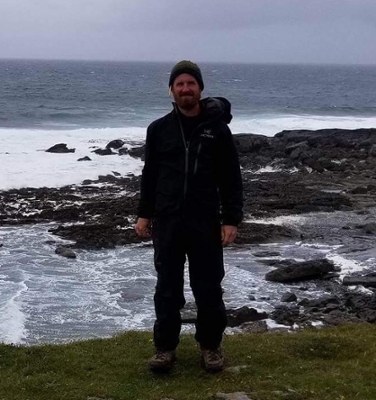EAPS Graduate Student Investigating Mercury Impact Basin
07-10-2019
Writer(s): Logan Judy

Mars gets a lot of attention these days, but other planets have important things to teach us, as well. Take Mercury, for example, which EAPS graduate student Greg Gosselin is studying.
“If you were to look at just a regular black-and-white image of Mercury, it would be very difficult for an untrained eye to distinguish between that and the moon,” Gosselin said. “Unlike the other terrestrial planets, its surface contains a near complete impact record. That can tell us a lot about the early history of Mercury and by extension, our solar system.”
Current knowledge about Mercury contains many open questions. Only about half of the planet is thoroughly mapped, leaving significant gaps in gravitational data and other important factors. Because Mercury does contain such a complete impact record, it has a lot to tell scientists about the Late Heavy Bombardment, a time when our solar system was subjected to a large influx of impacts.
With these goals in mind, Gosselin, with his advisor Dr. Andy Freed, is investigating the Caloris Impact Basin on Mercury, examining the how the basin was formed and how it changes over time. A better understanding of the basin would allow scientists to infer the tectonic history of the planet, and by extension, learn more about the early solar system’s history. Given his research, it may come as a surprise that Gosselin didn’t always plan on going into planetary geology.
“I kind of fell into it,” he said. “I was a geology undergraduate student and one of the first classes I took was a geophysics course. I started doing research with the professor there, and then with two other people I picked up an independent project working with my advisor at the time. It was a modeling project where we looked at the thermal evolution of the dwarf planet Ceres in the asteroid belt. That just sealed the deal that planetary sciences was something I could do.”
Since then, his research has been gaining traction. He was recently awarded the National Science Foundation Graduate Research Fellowship, which provides support for three years. While challenging questions about Mercury remain, there are exciting developments, as well. A joint operation between the European Space Agency (ESA) and the Japan Aerospace Exploration Agency (JAXA), named “BepiColombo,” is scheduled to arrive on the planet in 2025, an endeavor Gosselin is excited about.
“BepiColombo is going to shed a lot of light on some of these unknown things such as what is its surface made out of it, the expanded gravity field of southern hemisphere, and much more,” he said.
Gosselin anticipates graduating with his PhD in 2023.